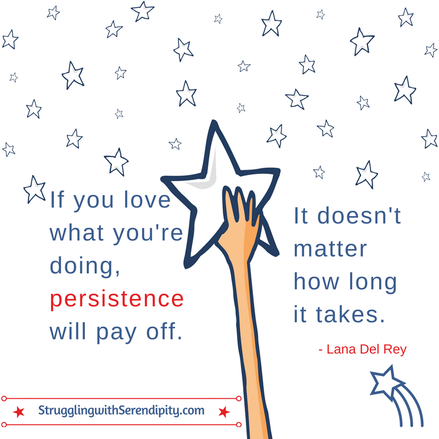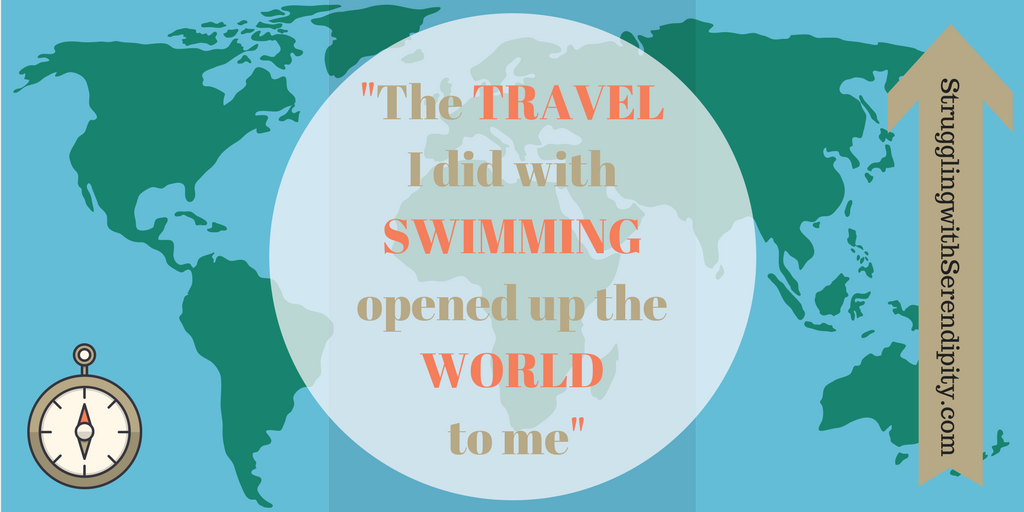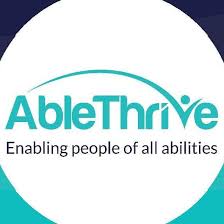 (This blog tells my family's story. To see more, click "blog" at the top of this webpage.) At the end of her junior year of high school, Beth thought about where to apply to college. All teenagers should have that choice, with or without a disability. However, the thought of college with quadriplegia made me anxious and uncertain. I wondered what my role would be. What if she didn’t make the best choice? What was the best choice? On the open road again in a little blue car, Beth and I took turns driving from northwest Ohio to the East Coast. We turned up the volume on John Mayer or mix CD’s she made, and sang along. First stop: Johns Hopkins University in Baltimore. As I pushed Beth up and over a formidable hill on campus, I couldn’t stop myself from stating the obvious: she could not wheel it on her own. She responded that an alternative route, much longer, looked a little easier. We had agreed that I would help during her first year at college, but the logistics were hazy. Our tour guide rambled and I imagined her wheeling alone on the Johns Hopkins campus. She still refused to consider a power chair or power assist wheels. The odds of Beth letting me push her chair through rain and snow? Zero. After we saw the unusual billboard in Seattle (Quadriplegia at Harvard: A+), I looked online and found the young woman pictured on the billboard. Brooke Ellison wrote a book with her mom titled Miracles Happen: One Mother, One Daughter, One Journey. With an injury like Christopher Reeve, Brooke needed a trach to breathe and could not move her arms. She shared her college dorm room with her mom and they moved through all of life’s hours together. Three years after Beth’s injury, I thought I would stay in her college dorm the first year, but I knew our days as a team were numbered. My youngest daughter kept trying to master the time-consuming details of self-care as a C6-7 quad. She worked every day on her biggest goal, complete independence, even though the odds were not in her favor. Encouraged by small victories, Beth never gave up. The third destination of a non-stop summer: Connecticut!
6 Comments
 (This blog tells my family's story. To see more, click "blog" at the top of this webpage.) Beth’s second swimming summer began with a twelve hour drive from NW Ohio to Minneapolis for her second USA Swimming Disability Championships. Swimming remained complex and challenging, but she drove through Chicago on congested highways with ease. Our flight to Seattle a year earlier was the only time we had been west of Chicago. Our hotel sat across from the parking lot from the expansive pool complex at the University of Minnesota. The first morning of the meet, we met her coach and teammate at the pool. Beth, sixteen, asked me to stay nearby, since I understood her developing routine with goggles, swim caps, towels, bathroom breaks, positioning, and showering. For me, that meant hovering at a distance on the bleachers until she wanted my help. I didn’t mind. I supported her quest for independence, though none of us knew if more progress on that front was even possible. Waiting to swim, new records set in fast races intimidated her. Expectations soared along with nerves. As Beth predicted one year earlier, she qualified for finals. Her previous national meet remained the only one where she had not. Despite the achievement of finals cuts, her morning races were sluggish, followed by discouraging finals times. After another dawdling race on the second morning, Beth’s frustration grew. The only S3 woman at the meet, she would win each race, a fact she did not appreciate. She wanted to achieve swim times close to her best ones—or faster. Immediately after the second morning’s races, time trials allowed swimmers to clock official times in events of his or her choosing. I made a rare request to her coach. I asked him to sign her up for a time trial in the 200 back. Three years after her injury, Beth earned her first official Paralympic American Record in the S3 classification for the 200-meter backstroke. We both knew it was the easiest record to beat, but I reminded her that just a year earlier, she wasn’t strong enough to swim nonstop for 200 meters. As I anticipated, the success tempered her disappointment with other races. We tumbled into the predictable schedule of a three day meet for swimmers who qualified for finals: wake up, warm up, race, cool down, eat, recover, rest, and repeat. And phone calls to John, Ben, Maria, and Peggy. The last day of the meet, after prelims, we strayed from the routine to visit the Mall of America. Beth let me push her wheelchair, a rare occurrence, to preserve her strength for finals. That evening, we laughed with her coach after she swam her fastest race of the meet after shopping. Even so, her resolve to work harder magnified. “Once I realized I was good in the water,” she said, “I trained really hard and put a lot of focus and effort into it, because it was this new avenue for me. I hadn’t thought I could be an athlete anymore.” After Minneapolis, Beth set ambitious new goals. In addition to mastering the forward freestyle, far from being attained, she aimed higher for the ultimate American Record in the 50 meter freestyle, by far the most difficult S3 record to beat. The second destination of a non-stop summer: Maryland! (This blog tells my family's story. To see more, click "blog" at the top of this webpage.)
A busy summer stretched out before us. Beth signed up to volunteer at St. Vincent again. She accepted a part-time job in an office and bought tickets for a John Mayer concert. She registered for Ohio’s Youth Leadership Forum, a five-day event for teenagers with a disability. I scheduled college visits around her first and only National Junior Disability Championships in Connecticut. Plus swim practices a few times a week and competing at her second USA Swimming Disability Championships. One thing we didn’t anticipate: a mid-summer invitation that would require an eight hour flight one way. Before summer school started for John, he drove Beth and I to the Chicago Shriners Hospital instead of traveling in the Shriners van. (We had a side trip planned after.) The occupational therapist gave Beth adapted tools to try, including a rocker knife with a knob handle to cut food. The progression of her kyphosis and scoliosis had significantly slowed. A doctor told us that swimming strengthened back muscles, and if the trend continued, she would not need surgery. No fusing the spine with a metal rod that would limit her flexibility and movement even more, in addition to risking more spinal cord damage. One of the teenagers we met at Green Springs could walk before fusion surgery left him with paraplegia. A hand surgeon recommended muscle transfer surgery to give Beth working thumbs. She politely told the doctor that she could use them without surgery, thank you very much. Even though her tenodesis grip was a feeble skill compared to controlling each thumb individually. She refused to consider muscle transfers since the procedure required several weeks of complete dependence afterwards. She wouldn’t give up any of her hard won independence. The Shriner’s social worker asked about college. Before the accident, we assumed Beth’s college would be in Ohio. She decided to major in biology and made a short list of possible colleges with top biology programs. All out of state. “The travel I did with swimming opened up the world to me,” Beth said. After more doctor appointments, we drove across town for a brief look at the University of Chicago. The next day, at the University of Illinois, we met with wheelchair sports staff. The University of Michigan impressed us. She also had toured other colleges with her brother and sister in the past, including Case Western in Cleveland. Beth considered Duke in North Carolina and Johns Hopkins in Maryland, but there wasn’t enough open time to visit both before her senior year of high school started. The first destination of a non-stop summer: Minneapolis!  (This blog tells my family's story. To see more, click "blog" at the top of this webpage.) My schedule aligned with Beth's since she couldn’t drive places independently with her wheelchair. After she achieved what I thought was impossible and swam forward in the pool, I worried less about disappointments she might face. Her confidence grew, along with her ability to push herself. Before Beth's junior year of high school ended, I drove three seventeen- year- old girls to physics day at Cedar Point in Sandusky, Ohio. The sprawling amusement park filled with teenagers on a weekday. Beth and her friends decided to try a few roller coasters. They skipped the long lines for the rides to take their places at the front, joking about the perks of disability. They worked on their physics assignment and bypassed the rides that didn’t have enough physical support for a teenager with quadriplegia. We watched the Iron Dragon coaster and deemed it safe. Legs would dangle, but with a relatively smooth ride. Metal bars held the body in place securely. However, the Iron Dragon had no elevator and several flights up. I dragged the wheelchair up, rolling it on the steps for stability, with Beth facing down. She wrapped her arms around the back to stay in place. Two friends each grabbed a metal rod by her legs for back-up. When we arrived at the top, lifting Beth into the tight seat of the ride was much harder than we expected, even with extra help. I suggested we stop and go back to the wheelchair, but she wanted to continue. The fast pace of the assembly line stopped and people stared. Disheartened, I stepped back out of the way as the girls zoomed off. I wondered if our risk assessment was accurate. In no time at all, the girls flew back to the starting point and stayed put in the cars for another round. Beth gave me the thumbs up so I didn’t worry as much the second time. I should have stressed more about the narrow steps going down that were packed with people. Down the flights was not easier since the stairs were narrow and crowded with people. At one point, we made the mistake of lifting the chair wheels high off the concrete to try to get around other people, making it more precarious with a tilted chair (and a tilted Beth). Crazy. We were lucky she didn't fall. After that, we unanimously agreed to avoid stairs altogether for the rest of the day. When the heat of the day kept rising, my daughter looked pale and didn’t refuse Tylenol to bring her fever down. The girls found cold drinks and air conditioning in a restaurant, followed by an arcade. Beth never allowed hot weather to stop her plans and adventures. Just ahead: a nonstop summer!  (This blog tells my family's story. To see more, click "blog" at the top of this webpage.) Beth led us to unexpected places after her spinal cord injury. “I always knew I was just going to get stronger and get back to my life as soon as possible,” she said. On May 10th, Beth drove us in her little blue car to the Michigan Wheelchair Games. Three years had passed since her injury and one year since her first swim meet in the same 25-yard pool. She competed using the forward freestyle stroke for the first time. Not a smooth endeavor and quite a bit slower than her backstroke. She dropped 30 seconds off of her 50 back race compared to her time one year before. I drove home from Michigan so Beth could rest. But first, she sang and danced in the passenger seat to her favorite John Mayer song. “I am invincible, as long as I’m alive!” Déjà vu. I loved our road trips. One week later, we attended the Ohio Wheelchair Games. Two weeks after that, Beth competed in Bowling Green at her first outdoor meet. She accepted my help to wheel over the grass to GTAC’s team camp. Her friend on the team was not in sight, so she picked a spot out of the way. She liked being outside and rarely complained about the heat. Hot weather raised her body temperature and I monitored it with a forehead gauge. She claimed to sweat a little, but I never saw it. Beth alternated her arms for the 100-meter backstroke instead of the double-arm technique, while the other swimmers in her heat swam a 200-meter event so she wouldn’t have to finish the race alone. Her swim times varied more from meet to meet than they did for her able-bodied teammates. She unexpectedly swam her fastest times by far in the 50-meter traditional forward freestyle race. She touched the wall at one minute and 28 seconds, still 15 long seconds away from the most difficult American Record in her S3 classification. I suspected that the swim parents with stopwatches fudged (improved) her time a little. Maria graduated from high school with honors in late May. We hosted a big graduation party on our backyard deck with John’s flowers and walkways providing a colorful backdrop. Maria chose to attend Tiffin’s Heidelberg College to major in education and take advantage of their acclaimed music program. She had intended to be a teacher ever since she toddled into her dad’s classroom. Since her sister’s injury, she decided to teach young children with a disability. She would be a passionate advocate for her future students. Always on the go, Maria babysat often, worked at a video store, took voice lessons, and performed in community theater. I loved her energy and enthusiasm. We all lived in the same house, but some evenings I didn’t see her. We met at Taco Bell sometimes to catch up over burritos and fountain drinks. Meanwhile, Beth made big plans for a summer to remember. |
Cindy KolbeSign up for my Just Keep Swimming Newsletter by typing your email address in the box. Thanks!Categories
All
Archives
November 2022
|


 RSS Feed
RSS Feed











